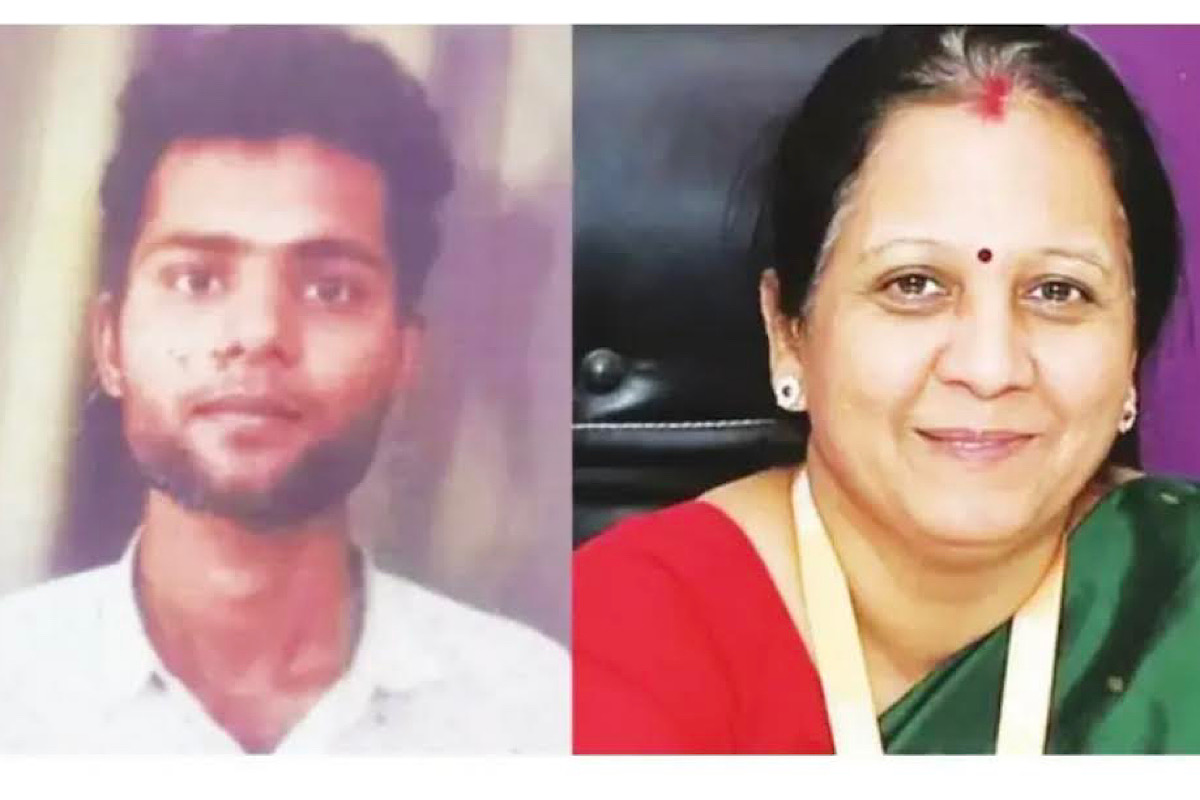Indore adjudged cleanest city in India for record 7th time in a row
Surat has been declared a joint-winner in the cleanest city category along with Indore.
Ashutosh Shrivastava had not cleared his seventh semester and had already attacked another faculty with a knife. However, she did not have the magic wand to get him educated and achieve success in an examination that is an ode to a Victorian rote system.

Ashutosh Shrivastava The student and Vimukta Sharma principal of BM Pharmacy College, Indore [Photo:SNS]
“those who burn books will in the end burn people – Heinrich Heine”
At around 4 am on 25 February, 54-year-old Vimukta Sharma succumbed to her injuries. A few days earlier, as principal of BM Pharmacy College, Indore, she was walking to her car, probably to go home, when she was approached by a student, Ashutosh Shrivastava. Something like this happens to every teacher, distraught student/s accost in car parks, at home, during festivals, etc. They start with pleading, then levy ad-hominem charges, then drag faculty to police stations, musclemen, and politicians or simply physically assault them.
Ashutosh Shrivastava had not cleared his seventh semester and had already attacked another faculty with a knife. However, she did not have the magic wand to get him educated and achieve success in an examination that is an ode to a Victorian rote system. He began cutting her with a sharp-edged weapon, then doused her in petrol and set her afire. He also received severe burns. In history, books have been burnt, riots have occurred, and self-immolation has happened. But Professor Sharma received a new gurudakshina, around 70 per cent burns, and so, became another casualty in this struggle for educating India’s youth. In a neat reversal, people have burned, dear Heinrich Heine; books (and education) will follow.
Advertisement
Let us assume Shrivastava had genuine casus belli. Perhaps the lectures were insufficient, or he was otherwise engaged. And maybe he genuinely believed that his head of the institute could help. But it is still hard to justify this outcome. This was the crossing of a moving red line that, over the past 25 years, has already normalized horrifying abuse and threats by students, parents, owners, administrators, and the overall system. It is not that students earlier have never been combative. But since the “liberalisation” of higher education in India, the magnitude and sheer quantity of such abuse have climbed beyond any exponential curve. Burning, too, will now become acceptable.
Even a cursory examination of the present private higher education milieu would find enough blame to dole out to all. Consequently, it will never happen. But four points are beyond debate. First, privatization has made higher education accessible to a larger number, many ill-prepared for it. Second, it has accorded edu-entrepreneurs, that is, owners, disproportionate power. Owners control financial outlays, hiring and promotion of faculty, the appointment of Vice-Chancellors, Deans, heads/principals, timetables, examinations, fees, and even what may be taughtlest it be too expensive.
Third, to stem the fall of standards new regulations have been erected. We aspire to be a research ecosystem at par with the US. But new regulations have benefitted only two groups. One is non-teaching middlemen, confidants of the owners, who ensure that inspections are successful. And second, the inspectors. This leads to our fourth outcome, that all this has disempowered and disenfranchised faculty. Disempowered faculty are then easy prey to students who are either struggling with academic load or plain disinterested. Today’s ideal faculty member is young, docile, willing to do all odd jobs, profusely praises the Vice-Chancellor and owners, and never stands up to a student.
Faculty today will often teach 27- 30 hours in 5-6 courses a week of the 48 working hours. In a top school in the US, that number would be two courses. In the owners’ mind though the faculty then barely works. As the new El Dorado is NAAC A+ rating, the demand is that all faculty should already have a dossier of SCOPUS A+ rated publications. Some institutes have erected policies to deduct salary if the publication goals, impossible ones at that, are not met. In this process, students also get neglected. Moreover, research and academic environment demand – more than resources, laboratories, and a reduction in teaching load – faculty empowerment. Good academic institutions value intellectual capital. This is the antithesis of the prevalent control and command system where faculty is labour.
What if new regulations empowered this labour? All private institutes and universities are constituted by state governments; thus, all faculty could be part of a “union.” Hence, have the right to proper pay, workload, promotion, freedom of censure from an owner or administrator, achievable research goals, and funds earmarked for further training. And most importantly, faculty cannot be fired at the whim of owners or administrators. If a course is curtailed or discontinued, funds should also be available for affected faculty to retool or find another institute.
All regulations have unintended consequences. Therefore this union should only empower faculty as individuals rather than as departments or groups. Thus, new hiring should occur through a neutral search committee and new academic norms through an advisory body.
And most importantly, students and parents too should get better advice about areas of study. Very often parents do not pay attention to their wards’ actual abilities, and this causes trouble. Also, there should be grievance cells and processes for grade challenges, but not directly to faculty or heads. And politicians cannot make coercive calls. Let Vimukta Sharma be the Rosa Parks of Indian education. We will all benefit.
(The writer was educated at MIT and Princeton and has held administrative positions at various universities in India. He is associated with Vastu Shilpa Foundation, Ahmedabad.)
Advertisement